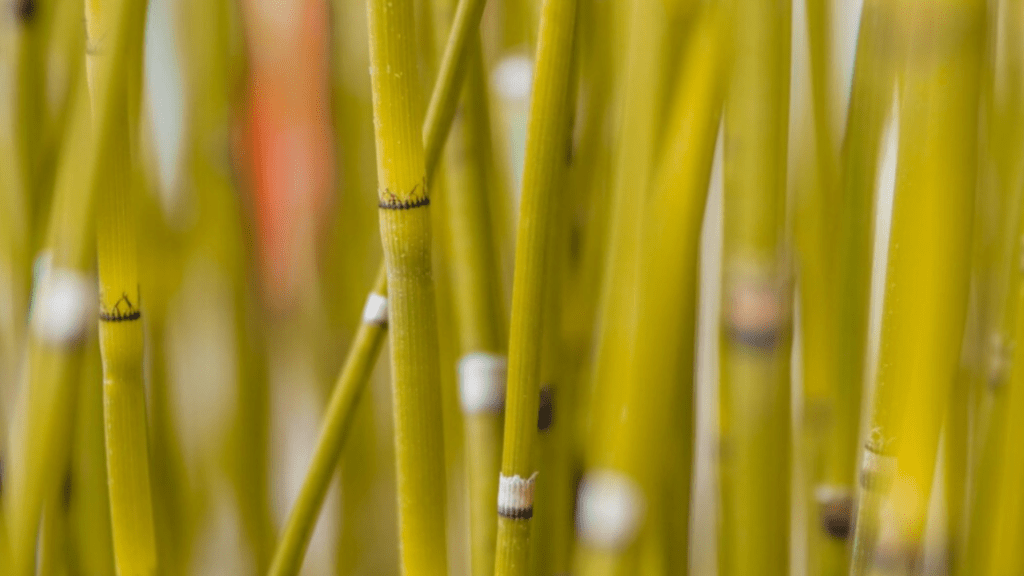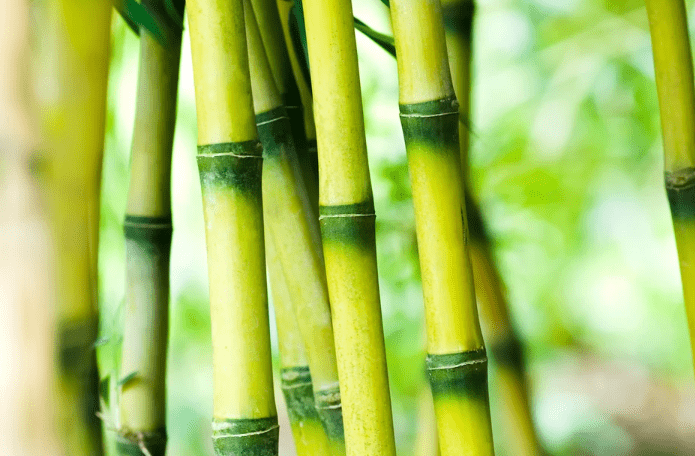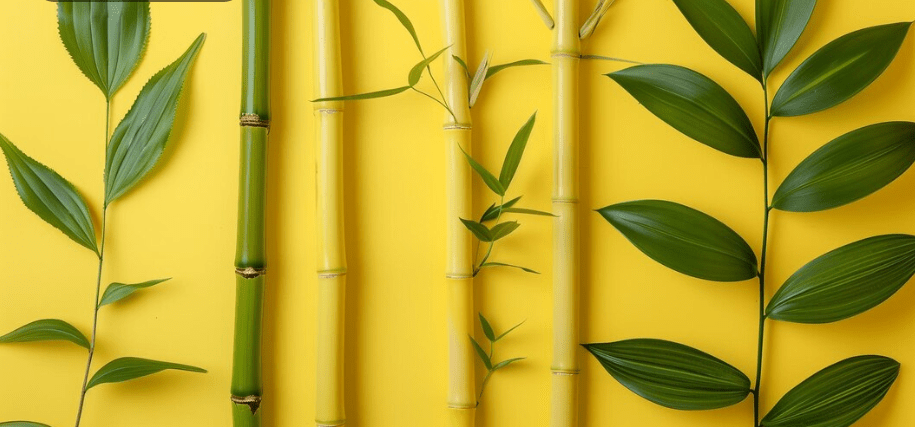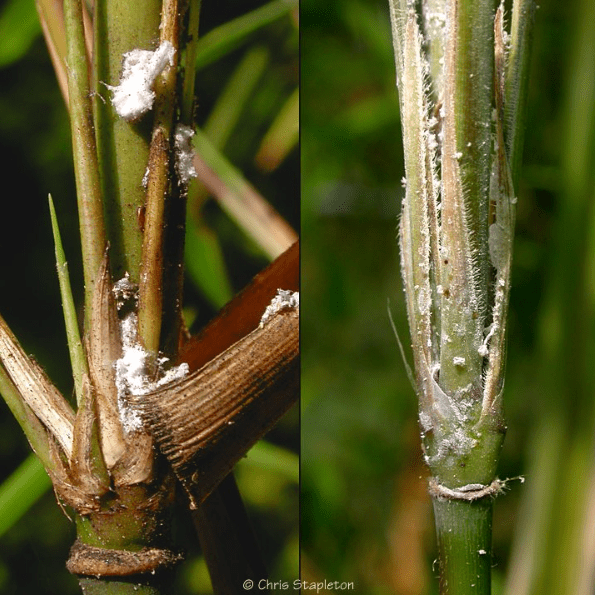
Why Is Your Bamboo Stalk Turning Yellow? Causes and Solutions Explained
Bamboo plants are a popular choice for indoor and outdoor decoration, but when the stalk starts turning yellow, it can be a cause for concern. In this post, we will explore the common reasons why your bamboo stalk turning yellow and provide practical solutions to revive your plant. Whether it’s due to overwatering, inadequate light, or a nutrient deficiency, we’ve got you covered with expert advice to help you keep your bamboo plant healthy and vibrant.
If you’ve noticed your bamboo stalk turning yellow, it could be due to a few different reasons. One common cause is overwatering, which can lead to root rot and yellowing leaves. Make sure to let the soil dry out between waterings to prevent this. Inadequate light can also cause yellowing, as bamboo plants thrive in bright, indirect light. If your plant is not getting enough sun, consider moving it to a brighter location. Additionally, a lack of nutrients, particularly nitrogen, can cause yellowing in bamboo plants. Consider fertilizing your plant with a balanced fertilizer to provide the necessary nutrients. By addressing these potential causes and implementing the appropriate solutions, you can help revive your yellowing bamboo plant and keep it healthy and vibrant.
Table of Contents
ToggleUnderstanding Bamboo Plants
Bamboo plants can be a beautiful addition to any home, but it’s important to understand how to care for them properly. One common issue with bamboo plants is yellowing leaves, which can be caused by a variety of factors. One common cause is overwatering, which can lead to root rot and yellowing leaves. Make sure to let the soil dry out between waterings to prevent this. Inadequate light can also cause yellowing, as bamboo plants thrive in bright, indirect light. If your plant is not getting enough sun, consider moving it to a brighter location. Additionally, a lack of nutrients, particularly nitrogen, can cause yellowing in bamboo plants. Consider fertilizing your plant with a balanced fertilizer to provide the necessary nutrients. By addressing these potential causes and implementing the appropriate solutions, you can help revive your yellowing bamboo plant and keep it healthy and vibrant.

Overview of bamboo species commonly kept as houseplants
Bamboo plants are popular houseplants known for their elegant and graceful appearance. There are several species of bamboo that are commonly kept as houseplants, including lucky bamboo, heavenly bamboo, and dragon bamboo. These plants are relatively easy to care for and can add a touch of nature and tranquility to any indoor space.
Lucky bamboo, also known as Dracaena sanderiana, is a popular choice for indoor plant enthusiasts. Despite its name, lucky bamboo is not actually a true bamboo plant, but rather a member of the Dracaena genus. It is characterized by its slender, green stalks and can be grown in water or soil. Lucky bamboo is believed to bring good luck and prosperity, making it a popular choice for home and office decor.
Heavenly bamboo, or Nandina domestica, is a true species of bamboo that is often grown as an ornamental plant. It has delicate, lacy leaves and vibrant red berries, making it a visually striking addition to any indoor garden. Heavenly bamboo thrives in bright, indirect light and prefers well-draining soil.
Dragon bamboo, also known as Bambusa guangxiensis, is a large and vigorous bamboo species that can be grown indoors with the proper care. It is characterized by its tall, upright stems and lush foliage, making it a dramatic statement plant for larger indoor spaces. Dragon bamboo requires ample sunlight and regular watering to thrive.
When caring for bamboo plants, it is important to provide them with the appropriate growing conditions, including adequate light, water, and nutrients. By choosing the right species of bamboo for your indoor space and providing them with the care they need, you can enjoy the beauty and tranquility of these graceful plants in your home.
Growth habits and characteristics of healthy bamboo
depend on the specific species of bamboo. However, in general, healthy bamboo plants have strong, upright stems and lush, vibrant green foliage. They are known for their rapid growth and resilience, making them a popular choice for indoor gardens.
When caring for bamboo, it is important to provide them with the appropriate growing conditions. This includes bright, indirect light for most species of bamboo, as well as well-draining soil to prevent waterlogged roots. Regular watering is also important, as bamboo plants do best with consistently moist soil.
Different species of bamboo may have specific care requirements, so it is important to research the specific needs of the variety of bamboo you have. Some bamboo species may require more sunlight, while others may be more tolerant of lower light conditions. By providing the right care and growing conditions, you can ensure that your bamboo plants thrive and add a beautiful, natural element to your indoor space.
Common Causes of Yellowing Bamboo Stalks
Environmental Factors
Inadequate lighting conditions
Inadequate lighting conditions can be a common cause of yellowing bamboo stalks. Bamboo plants thrive in bright, indirect light, so if they are not getting enough light, they may start to show signs of stress. It’s important to place your bamboo in a location where it can receive adequate light throughout the day. If you notice yellowing stalks, consider moving your bamboo to a brighter location and see if that helps improve its health. Remember, different species of bamboo may have specific light requirements, so make sure to research the needs of your specific variety to ensure it is getting the right amount of light.

Extreme temperatures
Can also cause yellowing bamboo stalks. Bamboo plants prefer a warm, but not too hot, environment. If the temperature is too cold or too hot, it can cause stress to the plant and lead to yellowing of the stalks. It’s important to keep your bamboo in a stable, moderate temperature to ensure its health and well-being. Avoid placing it near drafty windows or heat sources, as this can lead to temperature fluctuations that can harm the plant. Additionally, be mindful of the outdoor temperature if you have bamboo plants in outdoor containers, as extreme weather conditions can impact their health. By providing the right environmental conditions, such as adequate lighting and stable temperatures, you can help prevent yellowing of your bamboo stalks and ensure that your plants thrive.
Humidity levels
Humidity levels play an important role in the health of bamboo plants. Bamboo species thrive in environments with high humidity, so it’s essential to maintain adequate moisture levels to keep your bamboo healthy. If the humidity levels are too low, it can lead to dry and brittle leaves, as well as stunted growth. On the other hand, excessive humidity can create a breeding ground for mold and cause root rot in the bamboo plants. To maintain the ideal humidity levels for your bamboo, consider using a humidifier or misting the leaves with water to increase moisture in the air. Additionally, placing a tray of water near the bamboo plant can help to create a more humid environment. It’s important to monitor the humidity levels regularly and make adjustments as needed to ensure the optimal growing conditions for your bamboo plants. By maintaining the right humidity levels, you can help to prevent yellowing and maintain the overall health of your bamboo plants.
Watering Issues
Overwatering and root rot
are common problems that can affect bamboo plants. Overwatering can lead to waterlogged soil, which creates a perfect environment for root rot to develop. Root rot is a fungal disease that affects the roots of the plant, causing them to rot and decay. This can lead to wilting, yellowing leaves, and ultimately, the death of the plant.
To prevent overwatering and root rot, it’s important to water your bamboo plants sparingly and only when the top inch of soil is dry. Make sure the pot has drainage holes to allow excess water to escape, and avoid leaving standing water in the saucer beneath the pot.
If you notice signs of root rot, such as mushy, brown roots or a foul odor, it’s important to take action immediately. Remove the affected plant from its pot, trim off any damaged roots, and repot it in fresh, well-draining soil. Be sure to adjust your watering routine to prevent the issue from reoccurring.
By being mindful of your watering habits and taking steps to maintain the ideal humidity levels, you can help your bamboo plants thrive and avoid the pitfalls of overwatering and root rot.
Underwatering and dehydration
can have serious consequences for plants, including wilting, yellowing leaves, and even plant death. It’s important to water your plants sparingly and only when the top inch of soil is dry to prevent overwatering and root rot. Make sure your plant’s pot has drainage holes to allow excess water to escape, and avoid leaving standing water in the saucer beneath the pot. If you notice signs of root rot, such as mushy, brown roots or a foul odor, it’s important to take action immediately. Remove the affected plant from its pot, trim off any damaged roots, and repot it in fresh, well-draining soil. Adjust your watering routine to prevent the issue from reoccurring. By being mindful of your watering habits and maintaining the ideal humidity levels, you can help your plants thrive and avoid the pitfalls of underwatering and dehydration.
Nutrient Deficiencies
Can have serious consequences for plants, leading to stunted growth, yellowing leaves, and overall poor health. It’s important to understand the specific nutrient needs of your plants and provide them with the necessary fertilizers and supplements. Common nutrient deficiencies include nitrogen, phosphorus, and potassium, which can be addressed with balanced fertilizers. Micronutrients such as iron, magnesium, and calcium are also essential for plant health and should be provided through specialized fertilizers or amendments. Pay attention to the symptoms of nutrient deficiencies in your plants, such as yellowing between leaf veins or stunted growth, and take action to address the issue. Regular soil testing can help you identify any nutrient imbalances and adjust your fertilization routine accordingly. By providing your plants with the proper nutrients, you can support their growth and overall health, leading to thriving, vibrant plant life.
Pests and Diseases

Can have serious consequences for plants. It’s important to be proactive in preventing and treating these issues to ensure the health and vitality of your plants. Proper plant care and maintenance can help to prevent and mitigate the impact of pests and diseases. Regularly inspect your plants for any signs of pest infestation or disease, such as wilting, discoloration, or unusual growth patterns. If you notice any issues, take immediate action to address them. This may involve removing infected plants, using natural or chemical pest control methods, or implementing preventative measures such as pruning and maintaining good soil and plant health. It’s also important to choose plant varieties that are resistant to common pests and diseases and to rotate crops to reduce the risk of infestation. By staying vigilant and proactive in addressing pest and disease issues, you can help ensure the long-term health and prosperity of your plants.
Diagnosing Yellow Bamboo Stalks
Step-by-step guide to identifying the cause of yellowing
If you notice that your bamboo stalks turning yellow, it’s important to identify the cause so you can address the issue and keep your plants healthy. The first step is to check the soil moisture and drainage. Overwatering or poor drainage can lead to root rot, which can cause yellowing of the leaves and stalks. Make sure the soil is well-draining and adjust your watering schedule if necessary.
Next, check for pests and diseases. Bamboo can be susceptible to various pests and diseases that can cause yellowing. Look for signs of insect infestation or fungal infections, and treat accordingly.
It’s also important to consider the environmental conditions. Bamboo prefers humid, warm climates, so if it’s growing in an area with too much sun or too little humidity, it may start to yellow. Consider moving the plant to a more suitable location if this is the case.
Lastly, consider the nutritional needs of your bamboo. Yellowing can be a sign of nutrient deficiencies, particularly nitrogen. Consider fertilizing your bamboo with a balanced, slow-release fertilizer to provide the necessary nutrients.
By following these steps and identifying the cause of the yellowing, you can take the necessary steps to address the issue and keep your bamboo plants healthy and vibrant.
Visual signs and symptoms to look for
When caring for bamboo plants include yellowing or browning of the leaves, weak or stunted growth, and wilting. These signs can indicate a variety of issues, including overwatering, underwatering, environmental stress, or nutrient deficiencies. It’s important to closely observe your bamboo plants and address any signs of distress promptly. By identifying the specific symptoms and taking proactive measures, you can ensure the health and vitality of your bamboo plants. Keep an eye out for any visual changes and take appropriate action to address the underlying causes.
Solutions for Reviving Yellowing Bamboo
Adjusting Environmental Conditions
If you notice your bamboo plants yellowing or showing signs of distress, there are a few steps you can take to address the issue. First, consider fertilizing your bamboo with a balanced, slow-release fertilizer to provide the necessary nutrients. Additionally, closely observe your bamboo plants for signs of overwatering, underwatering, environmental stress, or nutrient deficiencies. Yellowing or browning leaves, weak or stunted growth, and wilting can indicate these issues. By identifying the specific symptoms and taking proactive measures, you can ensure the health and vitality of your bamboo plants. It’s important to adjust the environmental conditions, such as sunlight exposure and watering frequency, to promote the best growth for your bamboo. Keep an eye out for any visual changes and take appropriate action to address the underlying causes.
Proper Watering Techniques
Proper Watering Techniques are essential for the health and vitality of your bamboo plants. Overwatering or underwatering can lead to yellowing and distress in your bamboo, so it’s important to find the right balance. When watering your bamboo, make sure to water deeply and thoroughly, allowing the water to penetrate the roots. However, you should also ensure that the soil is well-drained to prevent waterlogged conditions that can harm the roots. It’s important to water your bamboo when the top inch of soil feels dry to the touch, as this indicates that the plant is ready for hydration. Additionally, avoid watering the leaves of your bamboo, as this can lead to fungal diseases. By following proper watering techniques and addressing any underlying issues, you can revive yellowing bamboo and promote its overall health and well-being.
Fertilization and Soil Care
Fertilization and Soil Care are essential for the health of your plants, including bamboo. It’s important to use a balanced fertilizer specifically designed for bamboo plants to ensure they receive the nutrients they need to thrive. You should fertilize your bamboo in the spring and summer months, as this is when they are actively growing. Be sure to follow the instructions on the fertilizer packaging to avoid over-fertilizing, which can be harmful to the plants. In addition to fertilization, maintaining healthy soil is crucial for the well-being of your bamboo. Bamboo plants prefer slightly acidic soil with good drainage. Adding organic matter to the soil, such as compost or mulch, can help improve its structure and fertility. Regularly checking the soil moisture and ensuring it’s well-drained can prevent waterlogged conditions that can harm the roots of your bamboo. By providing proper fertilization and soil care, you can ensure that your bamboo plants remain healthy and vibrant.
Pest and Disease Management
Pest and disease management is an important aspect of plant care, especially for bamboo. It is important to regularly check your bamboo plants for any signs of pests or diseases. Common pests that can affect bamboo include aphids, spider mites, and bamboo mites. These pests can cause damage to the leaves and stems of the plant, leading to stunted growth and overall decline in health. To manage these pests, you can use natural insecticides or insecticidal soaps to keep them at bay.
In terms of disease management, bamboo is susceptible to fungal diseases such as leaf spot, rust, and root rot. These diseases can cause discoloration of the leaves, wilting, and overall deterioration of the plant. To prevent these diseases, it is important to ensure proper air circulation around the plants, avoid overwatering, and remove any infected plant material. Using fungicides can also help manage and prevent the spread of fungal diseases in your bamboo plants.
Overall, maintaining a healthy growing environment, proper fertilization, and regular inspection for pests and diseases are crucial for the well-being of your bamboo plants. By taking proactive measures, you can ensure that your bamboo remains healthy and vibrant.
Preventing Future Yellowing
Routine care tips for healthy bamboo
To keep your bamboo plants healthy, it’s important to take proper care and preventive measures. In terms of insect pests, using natural insecticides or insecticidal soaps can help manage and keep them at bay. Bamboo is also susceptible to fungal diseases such as leaf spot, rust, and root rot, which can cause discoloration of the leaves, wilting, and overall deterioration of the plant. To prevent these diseases, it’s important to ensure proper air circulation around the plants, avoid overwatering, and remove any infected plant material. Using fungicides can also help manage and prevent the spread of fungal diseases in your bamboo plants. Overall, maintaining a healthy growing environment, proper fertilization, and regular inspection for pests and diseases are crucial for the well-being of your bamboo plants. By taking proactive measures, you can ensure that your bamboo remains healthy and vibrant.
Early detection and intervention
Early detection and intervention are crucial in maintaining the health of your bamboo plants. Regular inspection for pests and diseases is essential in preventing any issues from escalating. Look for any signs of discoloration, wilting, or unusual growth patterns in your bamboo plants. If you notice any abnormalities, it’s important to take immediate action to address the issue. By catching problems early on, you can prevent them from spreading and causing further damage to your plants. Additionally, regular maintenance and care are key in preventing future yellowing of your bamboo plants. Providing proper watering, fertilization, and ensuring adequate air circulation can help keep your plants healthy and vibrant. By staying proactive and taking preventive measures, you can maintain the overall health and beauty of your bamboo plants.
Seasonal care adjustments
Seasonal care adjustments are necessary to ensure the health and longevity of your bamboo plants. As the seasons change, so do the needs of your plants. In the spring, it’s important to focus on promoting new growth by providing adequate water and fertilization. As the weather warms up, be sure to keep an eye out for any pests or diseases that may become more active during this time. In the summer, it’s crucial to protect your bamboo plants from intense heat and sun exposure. Consider providing some shade or moving your plants to a more sheltered area if necessary. In the fall, focus on preparing your plants for the colder months ahead. Cut back any dead or damaged foliage and consider adding a layer of mulch to protect the roots from freezing temperatures. Finally, in the winter, it’s important to provide adequate insulation and protection for your bamboo plants. Consider wrapping them with burlap or providing a protective cover to shield them from harsh winter conditions. By making these seasonal care adjustments, you can ensure that your bamboo plants remain healthy and vibrant throughout the year.
In conclusion, yellowing bamboo stalks can be a common issue for plant owners, but it’s important to identify the cause and take the necessary steps to revive your plant. Whether it’s adjusting the watering schedule, providing more sunlight, or adding nutrients to the soil, there are solutions to help your bamboo thrive. By understanding the potential causes and implementing the right solutions, you can ensure that your bamboo plant stays healthy and vibrant.
Frequently asked questions And Answer
There are a few reasons why your bamboo stalk may be turning yellow. It could be due to overwatering, underwatering, or too much direct sunlight.
To prevent your bamboo from turning yellow, make sure you are watering it properly, providing it with the right amount of sunlight, and ensuring it has well-draining soil.
In some cases, you may be able to save your yellowing bamboo by adjusting its care routine and addressing any underlying issues. Trim away any yellow or dead leaves, and make sure to give it the proper care moving forward.
Yellowing bamboo can be a sign of disease, but it is more commonly caused by environmental factors such as improper watering or lighting. However, if you suspect disease, it’s best to consult with a plant professional for proper diagnosis and treatment.
The recovery time for yellowing bamboo can vary depending on the cause and severity of the issue. With proper care and attention, you may start to see improvements in a few weeks to a couple of months.
Fertilizer can help support the overall health of your bamboo, but it’s important to use it sparingly and according to the specific needs of your plant. Too much fertilizer can actually harm your bamboo, so it’s best to consult with a gardening expert for guidance.
If you suspect that the yellowing is due to root-bound conditions or poor soil quality, repotting your bamboo into a larger, well-draining container with fresh soil may help improve its health.
Healthy bamboo will have vibrant green leaves, strong and upright stalks, and a consistent growth pattern. It should also be resistant to pests and diseases. Keep an eye out for these signs to ensure your bamboo is thriving.
